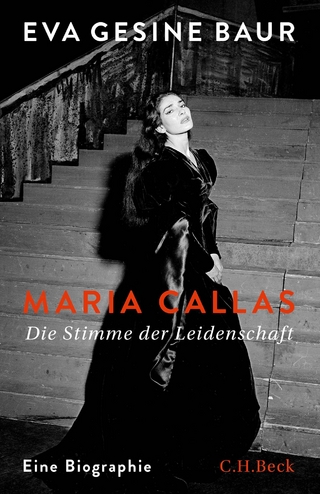
Robert Schumann: Piano Concerto
Seiten
2023
Cambridge University Press (Verlag)
978-1-316-51258-6 (ISBN)
Cambridge University Press (Verlag)
978-1-316-51258-6 (ISBN)
Offers an introduction to one of the most important and influential piano concertos in the history of Western music. It combines an account of the work's genesis with a detailed yet accessible analysis of each movement and new research into its reception and performance history.
Offering a concise introduction to one of the most important and influential piano concertos in the history of Western music, this handbook provides an example of the productive interaction of music history, music theory and music analysis. It combines an account of the work's genesis, Schumann's earlier, unsuccessful attempts to compose in the genre and the evolving conception of the piano concerto evident in his critical writing with a detailed yet accessible analysis of each movement, which draws on the latest research into the theory and analysis of nineteenth-century instrumental forms. This handbook also reconstructs the Concerto's critical reception, performance history in centres including London, Vienna, Leipzig and New York, and its discography, before surveying piano concertos composed under its influence in the century after its completion, including well-known concertos by Brahms, Grieg, Tchaikovsky and Rachmaninov, as well as lesser-known music by Scharwenka, Rubinstein, Beach, Macdowell and Stanford.
Offering a concise introduction to one of the most important and influential piano concertos in the history of Western music, this handbook provides an example of the productive interaction of music history, music theory and music analysis. It combines an account of the work's genesis, Schumann's earlier, unsuccessful attempts to compose in the genre and the evolving conception of the piano concerto evident in his critical writing with a detailed yet accessible analysis of each movement, which draws on the latest research into the theory and analysis of nineteenth-century instrumental forms. This handbook also reconstructs the Concerto's critical reception, performance history in centres including London, Vienna, Leipzig and New York, and its discography, before surveying piano concertos composed under its influence in the century after its completion, including well-known concertos by Brahms, Grieg, Tchaikovsky and Rachmaninov, as well as lesser-known music by Scharwenka, Rubinstein, Beach, Macdowell and Stanford.
Julian Horton is Professor of Music at Durham University. A past President of the Society for Music Analysis, he is author of Bruckner's Symphonies: Analysis, Reception and Cultural Politics (2004) and Brahms' Piano Concerto No. 2, Op. 83: Analytical and Contextual Studies (2017), and editor of The Cambridge Companion to the Symphony (2013).
Introduction: situating Schumann's piano concerto; 1. Rethinking the romantic piano concerto; 2. The genesis of Schumann's piano concerto; 3. Analysis (1): the first movement; 4. Analysis (2): the slow movement and Rondo Finale; 5. Reception and Legacy; Appendix I: Glossary of Technical Terms and Symbols; Appendix II.
| Erscheinungsdatum | 21.11.2023 |
|---|---|
| Reihe/Serie | New Cambridge Music Handbooks |
| Zusatzinfo | Worked examples or Exercises |
| Verlagsort | Cambridge |
| Sprache | englisch |
| Themenwelt | Kunst / Musik / Theater ► Musik ► Klassik / Oper / Musical |
| ISBN-10 | 1-316-51258-4 / 1316512584 |
| ISBN-13 | 978-1-316-51258-6 / 9781316512586 |
| Zustand | Neuware |
| Haben Sie eine Frage zum Produkt? |
Mehr entdecken
aus dem Bereich
aus dem Bereich


